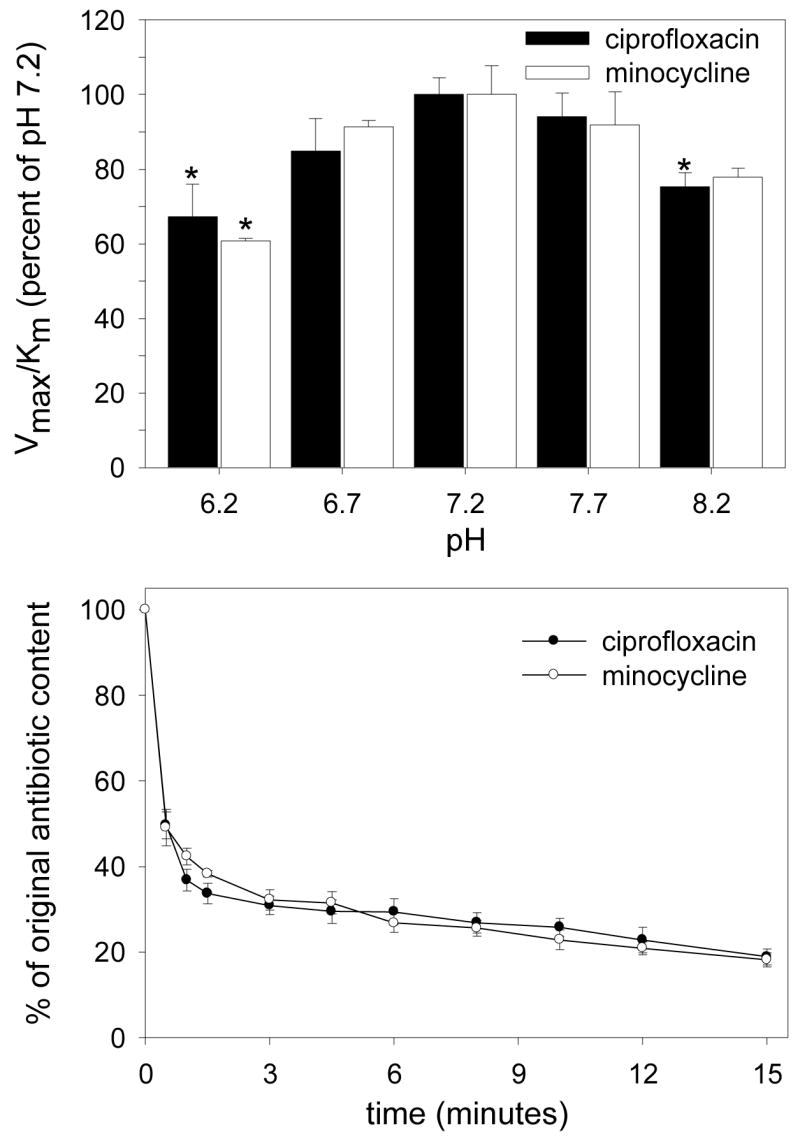Figure 2.

The pH-dependence and reversibility of ciprofloxacin and minocycline transport by gingival fibroblasts. Upper panel: Confluent cell monolayers were washed and overlaid with HBSS adjusted to the indicated pH. The kinetics of transport were assayed at 37° C, analyzed by the Lineweaver-Burk method and expressed as a percentage of the Vmax/Km ratio observed at pH 7.2. Data are presented as the mean ± SEM of at least 3 experiments. Changes in pH produced a significant overall effect on ciprofloxacin transport (P<0.02, ANOVA). Treatments that produced a significant difference from pH 7.2 are indicated by * (P<0.05, Dunnett’s test). Lower panel: Cell monolayers were loaded to steady-state by incubation for 20 minutes at 37° C in HBSS containing 50 μg/ml ciprofloxacin or minocycline. To trigger antibiotic efflux from the loaded cells, extracellular antimicrobial solutions were diluted 1:20 with 37° C HBSS. Efflux was monitored by the decrease in cell-associated fluorescence.
